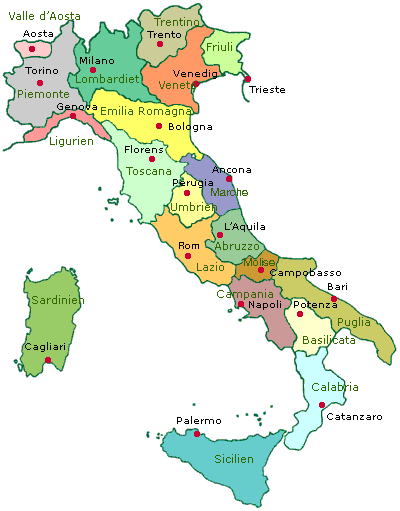Rasgrupp
To understand our own breed, we need to know the history and background of Cane Corson, but we also need to understand the area of use for which the dog was once bred.
Of course, there are constant changes in a race and some of these changes are good; examples of positive changes are better health and a more homogeneous type. Negative deviations can be a worse head shape with a shorter nose than what the breed standard prescribes, narrow nostrils that cause the dog to have trouble breathing or perhaps that the dogs tend to be too big or too small.
RACE GROUP:
GROUP 2
Schnauzer and Pinscher, molosser and mountain dogs as well as senna dogs
Group 2 is big and varied with everything from the little affen pinscher to the giant grand danois. Most breeds have been used and are still used in some places as guard and shepherd dogs. The group also includes cattle dogs and farm dogs, some of which are popular working dogs today.
Since Cane Corso is not a mountain dog, pinscher or schnauzer, only shepherd dogs and molasses remain in group 2. Let's find out what separates the two groups.
I FCI's standard står att läsa att Cane Corso tillhör:
Section: Molossian type,
Subsection: Mastiff type i rasgrupp 2.
MOLOSSER
Molosserhund, av latin Moloʹssus, av grekiska Molossoʹs, Molottoʹs ’molossisk’, dogglik hundtyp
Cane Corso är en moloss som möjligen härstammar från den förhistoriska Canis Pugnax, liksom den andra molossoida italienska hundrasen Napolitansk Mastiff. Molosserhundarna utgör en egen undergrupp skild från stora herdehundar och bergshundar och de tros härstamma från de doggliknande hundraser som romarna använde och har sitt ursprung från Centralasiens och Tibets högländer. De lär ha utvecklats för cirka 8 000 år sedan och spreds från Tibet både österut och söderut.
Cane Corso har fungerat som väktare av gård och gårdsfolk, av gårdens djur, av foder och andra viktiga och värdefulla ägodelar som människor på den italienska landsbygden kunde tänkas äga. Cane Corso har använts till jakt på framför allt vildsvin, en slags hetsjakt som inte längre är tillåten. Vår ras har hjälpt slaktare i sitt arbete, den har fungerat som fångvaktarhund och stridshund. Det sägs att Cane Corso användes vid gladiatorspelen i antikens Rom. I moderna tider kan man finna Cane Corso bland eftersökshundar, brukshundar, tjänstehundar, vakthundar, gårdshundar och som rena sällskapshundar.
Molosserhundarna upptäcktes av Alexander den store ca 400 f.Kr. i det forntida Assyrien. Han blev mycket imponerad och skapade vad man skulle kunna kalla den första molosskenneln.

Kanske är det lika sant som den grekiska mytologin berättar: Gudinnan Artemis gav den Atenska prinsessan Procris en hund, Laelaps, som aldrig misslyckades med att fånga sitt byte och från denna hund härstammar Molosserna.
Men vad är en mastiff då?
Mastifferna är alltså en undergrupp av molosserna. Till mastifferna räknas en rad olika raser, där Cane Corso är en.
RACE:
CANE CORSO Pronounced Kane Korso (not Käjn Kårså or King Corso)
History
The breed is mainly descended from the ancient Roman molosser dogs. From previously being spread all over Italy, the breed has in recent centuries been preserved in and around the region of Apulia in southern Italy, ie the "heel". The breed name comes from the Latin "cohors", which means "defender and guardian of the farm". In the past, it was used for all kinds of chores to serve man. Corson worked mainly as a guard and farm dog but later also when hunting high game, which suited the breed perfectly with its strength and courage in combination with the athletic physiognomy.
Area of use
The breed is of the guard and farm dog type, which must be taken into account when choosing this breed. In Sweden today it is mainly used as a companion dog but is not an ideal first-time dog due to its characteristics.
Health
Cane corso generally has good health and is durable, for better or worse. Hip dysplasia (HD) and elbow joint dysplasia (ED) occur.
Properties / Mentality
It should be calm, stable, alert and attentive, with a lot of guard instinct. It is not always fond of strangers but can ignore them. The breed needs good social environmental training while growing up to develop optimally. The breed should not be nervous, scared or aggressive. It is an enduring, strong and very durable, active and mobile dog and requires a certain amount of exercise and freedom of movement. The breed's strong guard instinct and independence make it best suited to a responsible person with knowledge and previous dog experience.
Size and appearance
Cane corso is a medium to large dog, robust and powerful but still with a certain elegance. It is powerful and has dry muscles. The head is large and typical of a mole. Height at withers for males is 64–68 cm and females 60–64 cm. Weight for males is about 45-50 kg and for bitches about 40-45 kg. The coat is short, glossy and very thick with some undercoat. The color is black, lead gray, slate, light gray, light fawn (yellowish), deer red, dark fawn and brindle.
Fur care
The breed has a very easy-care coat. It should be bathed and brushed if necessary.
Other
Try to meet several dogs before you decide. Preferably also in other places than in the dogs' homes. Contact the breed club for more detailed information regarding the breed's health and what you should watch out for.



